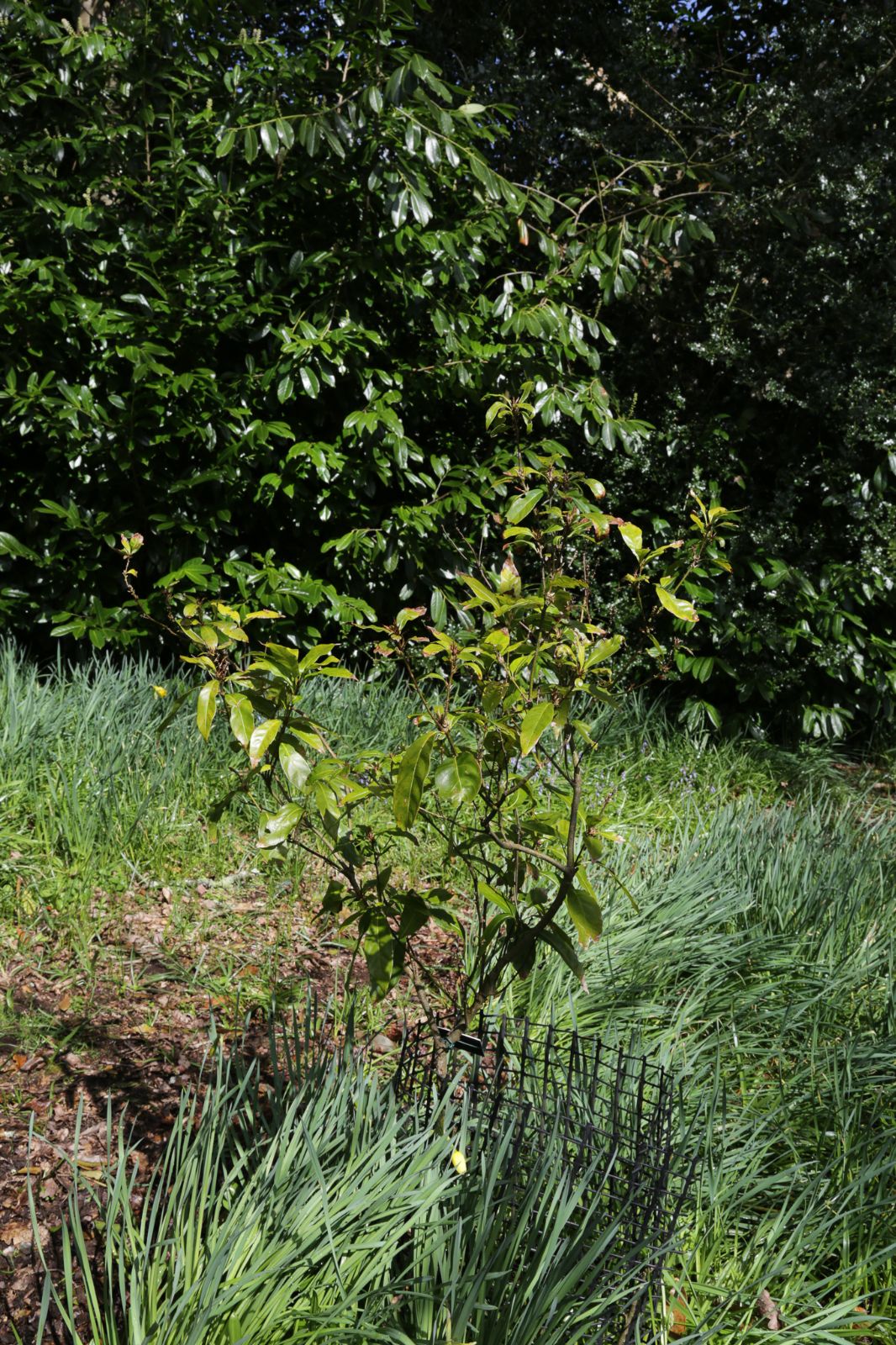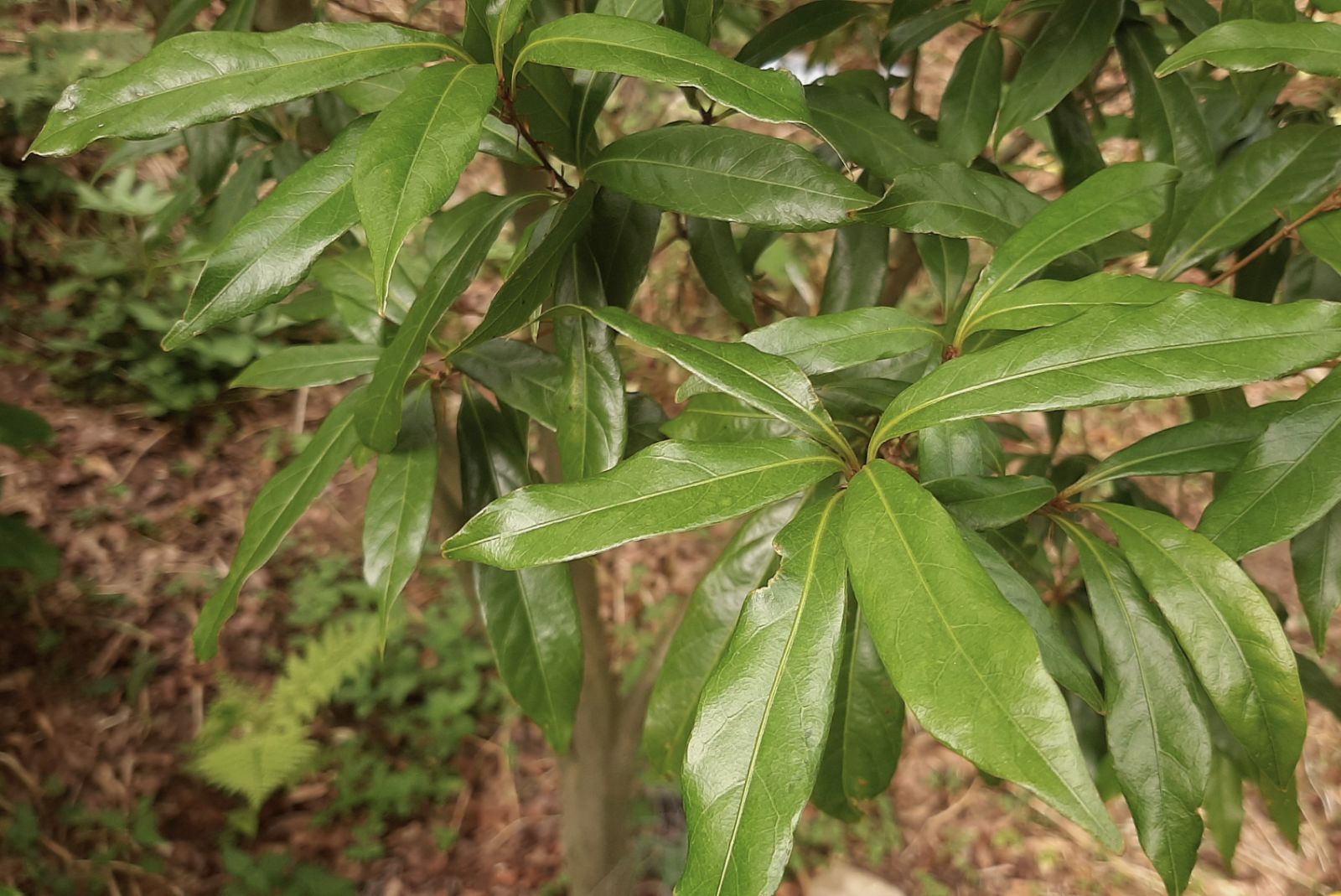Quercus hondae
Sponsor
Kindly sponsored by
The Trees and Shrubs Online Oak Consortium
Credits
Allen Coombes & Roderick Cameron (2022)
Recommended citation
Coombes, A. & Cameron, R. (2022), 'Quercus hondae' from the website Trees and Shrubs Online (treesandshrubsonline.
Genus
- Quercus
- Subg. Cerris, Sect. Cyclobalanopsis
Common Names
- ハナガガシ (hanagagashi)
- サツマガシ (satsumagashi)
Synonyms
- Cyclobalanopsis hondae (Makino) Schottky
Other taxa in genus
- Quercus acerifolia
- Quercus acherdophylla
- Quercus acrodonta
- Quercus acuta
- Quercus acutifolia
- Quercus acutissima
- Quercus afares
- Quercus affinis
- Quercus agrifolia
- Quercus alba
- Quercus aliena
- Quercus alnifolia
- Quercus aquifolioides
- Quercus arizonica
- Quercus arkansana
- Quercus aucheri
- Quercus augustini
- Quercus austrina
- Quercus × auzendei
- Quercus baloot
- Quercus bambusifolia
- Quercus baronii
- Quercus bicolor
- Quercus brantii
- Quercus buckleyi
- Quercus canariensis
- Quercus canbyi
- Quercus candicans
- Quercus castanea
- Quercus castaneifolia
- Quercus cerris
- Quercus chenii
- Quercus chrysolepis
- Quercus coccifera
- Quercus cocciferoides
- Quercus coccinea
- Quercus conspersa
- Quercus crassifolia
- Quercus crassipes
- Quercus delavayi
- Quercus dentata
- Quercus deserticola
- Quercus dolicholepis
- Quercus douglasii
- Quercus dumosa
- Quercus durifolia
- Quercus eduardii
- Quercus ellipsoidalis
- Quercus emoryi
- Quercus engelmannii
- Quercus engleriana
- Quercus euboica
- Quercus eugeniifolia
- Quercus fabri
- Quercus faginea
- Quercus falcata
- Quercus floribunda
- Quercus frainetto
- Quercus franchetii
- Quercus fruticosa
- Quercus fusiformis
- Quercus gambelii
- Quercus garryana
- Quercus geminata
- Quercus georgiana
- Quercus germana
- Quercus gilliana
- Quercus gilva
- Quercus glabrescens
- Quercus glauca
- Quercus graciliformis
- Quercus gravesii
- Quercus griffithii
- Quercus grisea
- Quercus guyavifolia
- Quercus hartwissiana
- Quercus hemisphaerica
- Quercus × hispanica
- Quercus hypargyrea
- Quercus hypoleucoides
- Quercus ilex
- Quercus ilicifolia
- Quercus imbricaria
- Quercus incana
- Quercus infectoria
- Quercus insignis
- Quercus ithaburensis
- Quercus kelloggii
- Quercus × kewensis
- Quercus kiukiangensis
- Quercus laceyi
- Quercus laevis
- Quercus lamellosa
- Quercus lanata
- Quercus lancifolia
- Quercus laurifolia
- Quercus laurina
- Quercus × leana
- Quercus leucotrichophora
- Quercus × libanerris
- Quercus libani
- Quercus lobata
- Quercus lobbii
- Quercus lodicosa
- Quercus longinux
- Quercus longispica
- Quercus look
- Quercus × ludoviciana
- Quercus macranthera
- Quercus macrocalyx
- Quercus macrocarpa
- Quercus macrolepis
- Quercus marilandica
- Quercus mexicana
- Quercus michauxii
- Quercus mongolica
- Quercus monimotricha
- Quercus montana
- Quercus morii
- Quercus muehlenbergii
- Quercus myrsinifolia
- Quercus myrtifolia
- Quercus nigra
- Quercus × numidica
- Quercus oblongifolia
- Quercus obtusata
- Quercus oglethorpensis
- Quercus oxyodon
- Quercus pagoda
- Quercus palmeri
- Quercus palustris
- Quercus pannosa
- Quercus parvula
- Quercus petraea
- Quercus phellos
- Quercus phillyreoides
- Quercus planipocula
- Quercus poilanei
- Quercus polymorpha
- Quercus pontica
- Quercus prinoides
- Quercus pubescens
- Quercus pyrenaica
- Quercus rehderiana
- Quercus reticulata
- Quercus robur
- Quercus rotundifolia
- Quercus rubra
- Quercus rugosa
- Quercus rysophylla
- Quercus sadleriana
- Quercus salicina
- Quercus sartorii
- Quercus × schneideri
- Quercus schottkyana
- Quercus semecarpifolia
- Quercus senescens
- Quercus serrata
- Quercus sessilifolia
- Quercus setulosa
- Quercus shumardii
- Quercus sinuata
- Quercus spinosa
- Quercus stellata
- Quercus stenophylloides
- Quercus suber
- Quercus subspathulata
- Quercus tarokoensis
- Quercus tatakaensis
- Quercus texana
- Quercus tomentella
- Quercus trojana
- Quercus tungmaiensis
- Quercus turbinella
- Quercus × turneri
- Quercus undulata
- Quercus utahensis
- Quercus utilis
- Quercus uxoris
- Quercus variabilis
- Quercus velutina
- Quercus virginiana
- Quercus vulcanica
- Quercus warburgii
- Quercus wislizenii
- Quercus xalapensis
Tree to 20 m or more tall and 1 m or more diameter. Trunk buttressed on old trees. Bark thick, grey and fissured and with age, young shoots red-brown, sparsely hairy at first soon becoming glabrous. Leaves evergreen, often clustered at the tips of the shoots, thinly leathery, narrowly lanceolate to oblanceolate, to 14 × 3.5 cm, narrowed to the base and often decurrent on the petiole, taper-pointed at the apex, the margin with sharp teeth in the apical half to entire or nearly so. Leaves emerge reddish when young becoming glossy bright green above, paler beneath and glabrous on both sides at least when mature with up to 12 veins on each side of the prominent midrib. Petiole to 1.5 cm, glabrous, narrowly winged in the apical part. Cupules short-stalked, hemispherical, with six to seven rings of tomentose scales, the upper ones crenate. Acorns ovoid-elliptic, to 1.5 × 1 cm, about ¼ to ½ included in the cup, ripening the second year. (Haddock 2008; Ohwi 1965; le Hardÿ de Beaulieu & Lamant 2010).
Distribution Japan Kyushu, Shikoku
Habitat Humid valley slopes or valley bottoms in association with Q. gilva, Q. glauca, and Castanopsis cuspidata.
USDA Hardiness Zone 8
RHS Hardiness Rating H4
Conservation status Vulnerable (VU)
This species is related to Q. acuta and Q. sessilifolia but differs in its narrower leaves that are more or less glabrous even when young. Coming from southern Japan it might be expected to be not very hardy and this has been borne out as, after several introductions, only a few young and small plants survive in cultivation. At White House Farm, Kent, England a tree originating from Kyushu seed was about 5 m tall in 2021 and has suffered a little frost damage (M. Foster pers. comm.). Also from Kyushu seed are two small plants at Penrice Castle, Wales (T. Methuen-Campbell pers. comm. 2021), as is a small plant at Arboretum des Pouyouleix, France (B. Chassé pers. comm. 2020). A plant at Arboretum de la Bergerette, France, suffers from summer droughts and was damaged by frost in March and April 2021. It had been badly damaged by –13°C in 2012 but survived (S. Haddock. pers. comm.). In Japan it is grown at Rinshinomori Park, Tokyo (Tokyo Metropolitan Government Bureau of Construction 2022). This was the origin, in 2006, of a plant that grew at Sir Harold Hillier Gardens. Although this did not survive it lived long enough to provide beautiful foliage scans (Arboretum Wespelaar 2018). At Chevithorne Barton, Devon, England a plant deriving from seed of the Tokyo tree was only 80 cm tall in 2021 and suffers from frost damage (J. MacEwen pers. comm.)
Haddock (2008) described finding trees near shrines on Kyushu and Shikoku, Japan, one of which, said to be 300 years old, he described as the ‘biggest in the world’ of this species at 40 m tall and 1.7 m diameter.
Named in 1902 after Prof. Dr. Seiroku Honda, a forestry expert of the Dendrological Laboratory, Agricultural College, Imperial University of Tokyo. The common name in Japanese, hanagagashi, can be translated as ‘long-leaf oak’ (gashi = ‘evergreen oak’); the alternative name, satsumagashi, refers to a location where it is found: Satsuma was an old province of Japan that is now the western half of Kagoshima Prefecture on the island of Kyushu (K. Tokunaga pers. comm. 2022).








